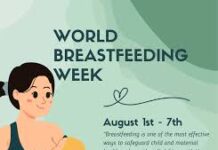The World Health Organization (WHO) has released its guidelines for the treatment of people co-infected with visceral leishmaniasis and HIV, to recommend better treatments based on the results of two studies conducted by the Drugs for Neglected Diseases initiative (DNDi), Médecins Sans Frontières (MSF) and their partners in Ethiopia and India.
In Ethiopia, the new treatment strategy was shown to have an 88% efficacy rate at the end of therapy (after 58 days), whereas the efficacy of the current standard treatment was 55% in the trial. In India, the new treatment regimen was efficacious for 96% of cases after 210 days, while a lower rate of 88% was observed for cases receiving the standard treatment.
‘These are outstanding results, considering the difficulties to achieve treatment response in patients affected by both visceral leishmaniasis and HIV. The new WHO guidelines are a significant step that will greatly improve the lives of patients who are affected by both diseases and who are suffering from stigma, ostracization, loss of income, and repeated relapses,’ said Dr Fabiana Alves, Director of NTDs (Neglected Tropical Diseases) Leishmaniasis and Mycetoma at DNDi.
People living with HIV are 100 to 2,300 times more likely to develop visceral leishmaniasis, also known as kala-azar, a neglected tropical disease that is transmitted by the bite of a sandfly and causes fever, weight loss, and intense fatigue. It is often fatal if left untreated.
‘It is often hard to treat people living with these two diseases, because their weakened immune systems do not respond well to standard treatments. These patients have more frequent and more severe side effects from the treatment, higher risk of having another episode of visceral leishmaniasis in the future, and higher risk of death. The new treatment, now included in WHO guidelines, greatly increases their chance of being cured during a visceral leishmaniasis occurrence,’ said Dr Rezika Mohammed, Assistant Professor of Internal Medicine, University of Gondar, who was the Principal Investigator of the study in Ethiopia.
In Ethiopia, young seasonal migrant workers, who work in large farms and are exposed to sandflies bites, are some of the people most at risk of co-infection. Apart from the low efficacy of the standard treatments for this patient population, they also often relapse, stay in hospitals for long periods, lose their income, and fall deeper into poverty. They may also be ostracized by their co-workers and communities and sometimes even by their own family members.
In some districts of the Indian state of Bihar – India’s most endemic state – up to 20% of adults diagnosed with visceral leishmaniasis are co-infected with HIV. These co-infected patients serve as a reservoir for visceral leishmaniasis, which is hampering sustainable elimination efforts in the country.
The current standard treatment for visceral leishmaniasis/HIV co-infection consists of single injections of liposomal amphotericin B (LAmB). The new treatment course is a combination of the oral treatment miltefosine and LAmB; it was shown to have a significantly better efficacy rate in two clinical studies conducted in India by MSF and in Ethiopia by DNDi and supported by other partners.
‘For the first time, patients with visceral leishmaniasis/HIV co-infection will be treated with evidence-based treatment. This is an important step towards recognising these patients as highly vulnerable both from a clinical and social perspective; improving their management will benefit both patients and the visceral leishmaniasis elimination programme. However, there remains a lot to be done; these patients present with multiple complex medical issues that need to be addressed holistically, including a very high prevalence of TB,’ said Dr Sakib Burza, Medical Advisor and study coordinator at MSF.
India, Ethiopia, and other countries where both diseases are endemic are expected to adapt their own treatment guidelines in the future to include the new treatment recommended by the WHO.
‘This new treatment is excellent news, as it reduces the use of injectable drugs and significantly increases the chances for patients to be cured. It recommends intermittent administration over 14 days, which earlier was 38 days. We are proud of this achievement,’ said Dr Krishna Pandey, Director, Rajendra Memorial Research Institute and the Principal Investigator in the study.
Research to find an even better treatment will continue.
‘The new combination treatment still relies on miltefosine, an oral drug that can potentially affect the development of the embryo in pregnant women; and liposomal amphotericin B, a drug given as an infusion that can be delicate to administer and requires hospitalization and monitoring. Lengthy hospital stays or frequent ambulatory hospital visits can be challenging for some patients and may result in substantial loss of income for both patient and caregiver,’ said Dr Monique Wasunna, DNDi Eastern Africa Regional Director, in Nairobi, Kenya.
Patients with visceral leishmaniasis still need improved, safe, and efficacious treatments. That is why DNDi and its partners are continuing their efforts to develop a treatment that will be completely oral, safe, and efficacious – a drug that can be taken at the primary health care level, which will allow health workers to reach all people affected by visceral leishmaniasis.
The clinical trial in Ethiopia was financially supported by the European Union Seventh Framework Programme, the German Federal Ministry of Education and Research (BMBF) through KfW, the Dutch Ministry of Foreign Affairs (DGIS), the Spanish Agency for International Development Cooperation, UK Aid, the Swiss Agency for Development and Cooperation (SDC), MSF International, and the Medicor Foundation. The trial in India was funded by MSF Spain.












